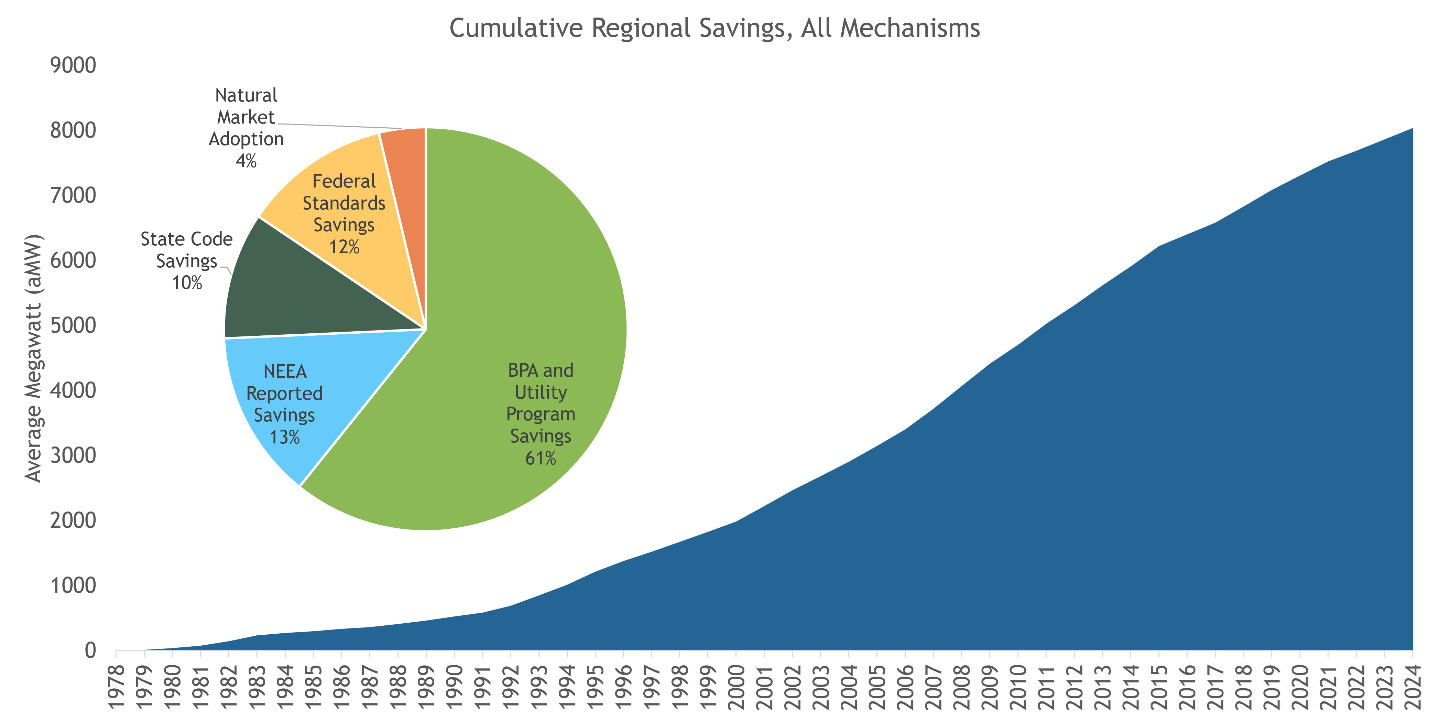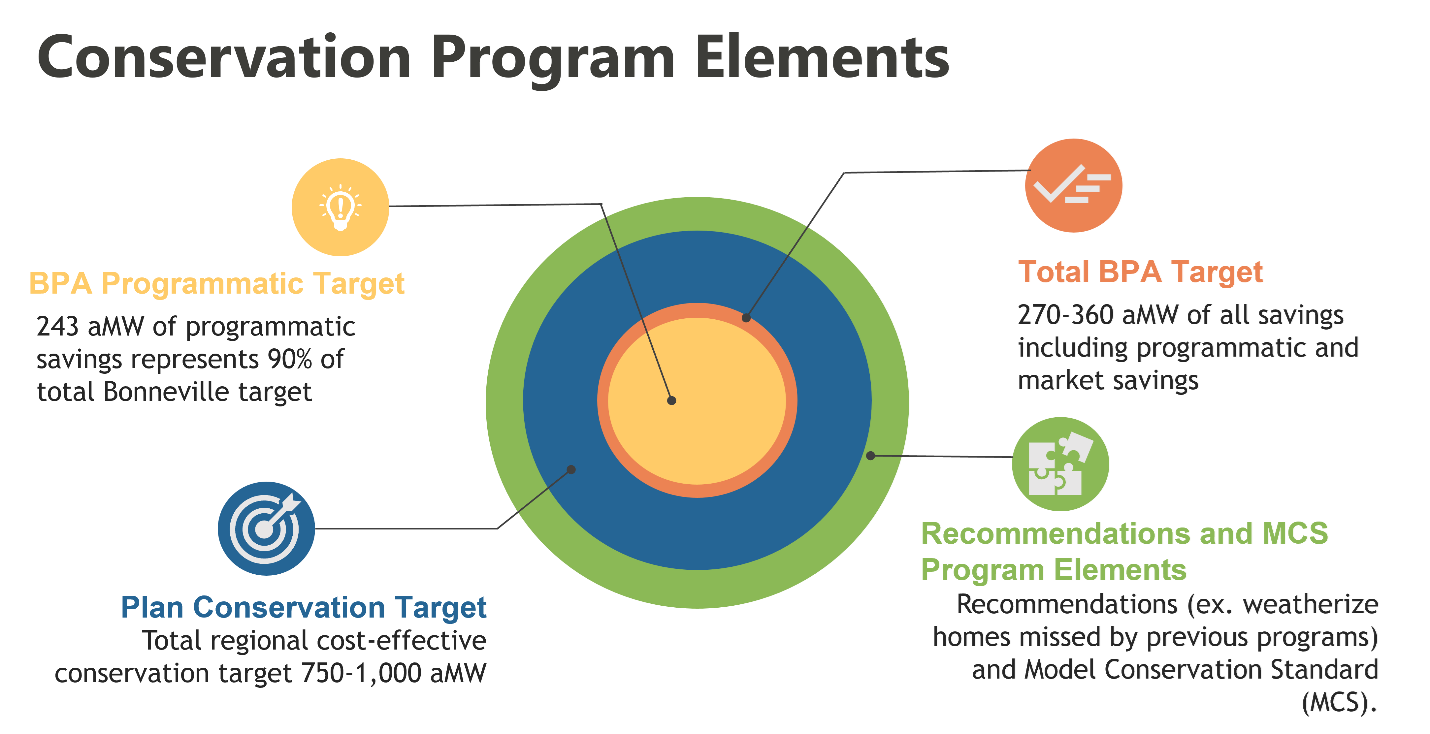
Under the Northwest Power Act of 1980, the Council represents Idaho, Oregon, Washington, and Montana in developing a 20-year power plan for the Pacific Northwest, which it reviews and updates within five years of adoption. These power plans assure the Northwest of an adequate, efficient, economical, and reliable power supply. Over the past two decades, collaborative work by the Council, the Regional Technical Forum, BPA, regional utilities, and other partners have delivered a major success in power planning for the Northwest’s electricity grid. Regional power costs have been among the lowest in the U.S., while power supply shortages have been extremely rare. Acquiring cost-effective energy efficiency has played a major role in this success story.
In its charter, the Regional Technical Forum is tasked with annually surveying the region’s utilities, Bonneville Power Administration, Northwest Energy Efficiency Alliance (NEEA), and system benefit charge administrators like Energy Trust of Oregon on their efficiency achievements. The RTF supports the compiling of the data into a Regional Conservation Progress (RCP) report, and staff present it to the Council to offer a full picture of the region’s progress against the power plan’s efficiency targets. The Council in its 2021 Power Plan included a conservation program with multiple elements, including a target range for cost-effective conservation of 750-1,000 aMW for the region within the six-year plan period. The graphic shows some of the high-level details of the 2021 Plan’s Conservation Program and for the region to complete the Conservation Program in the Plan will be completing all of these elements. The 2024 RCP is the third-year, and half-way point, tracking to the 2021 Plan.
Cumulative Conservation Achievements and the 2021 Plan
2024 RCP Workbook Presentation submitted to the Council
The Northwest as a region achieved 160 aMW of energy savings due to conservation measures. This total savings is representative of utility program savings, NEEA reported savings, and savings from codes and standards with an adjustment for double and under counting. The chart to the right illustrates how the regional savings compare to the Plan targets range using an even annual distribution of the goal and ramped version. As shown in the chart, the first two years of tracking puts the region on track to exceed the low end of the Council's 2021 Power Plan target range to ensure an adequate, efficient, economical, and reliable power supply.
The region has achieved a total of 465 aMW so far in this plan period. The region will need to achieve between 95 and 179 aMW annually in the remaining years of the Plan period to remain within the Plan’s target range. Forecasts for 2025 are indicating that programs will continue to stay on track to at least fall within the midpoint of the plan’s target range, and this will likely continue in 2026 based on the preliminary data provided. This is a positive and important trend for the region as the Council’s 2029 Adequacy Assessment indicated that just accomplishing the low end of the target range creates risk.
Energy efficiency reduces energy demand and makes it easier to manage, while also lowering costs for consumers. Over the past several decades, the Council’s analysis has consistently shown that energy efficiency is a more cost-effective option to meeting electricity demand than building new power plants.
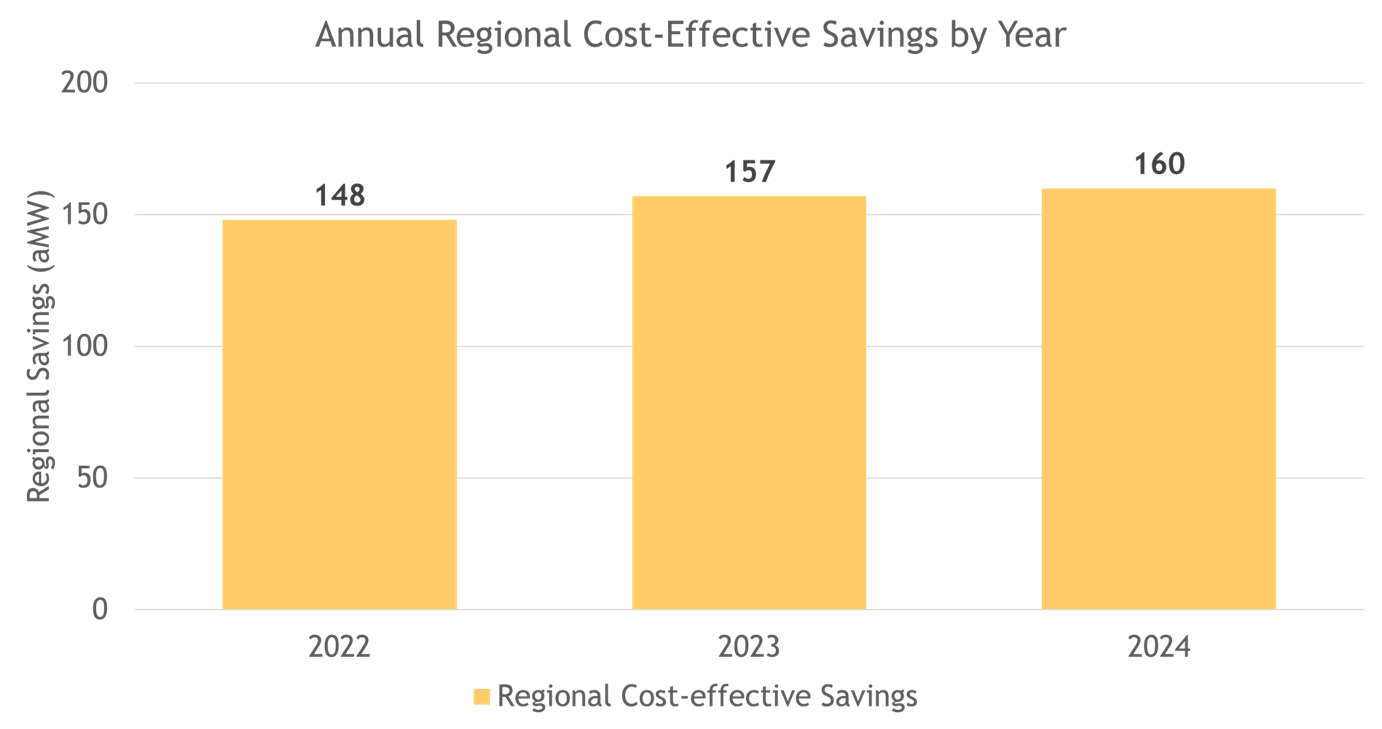
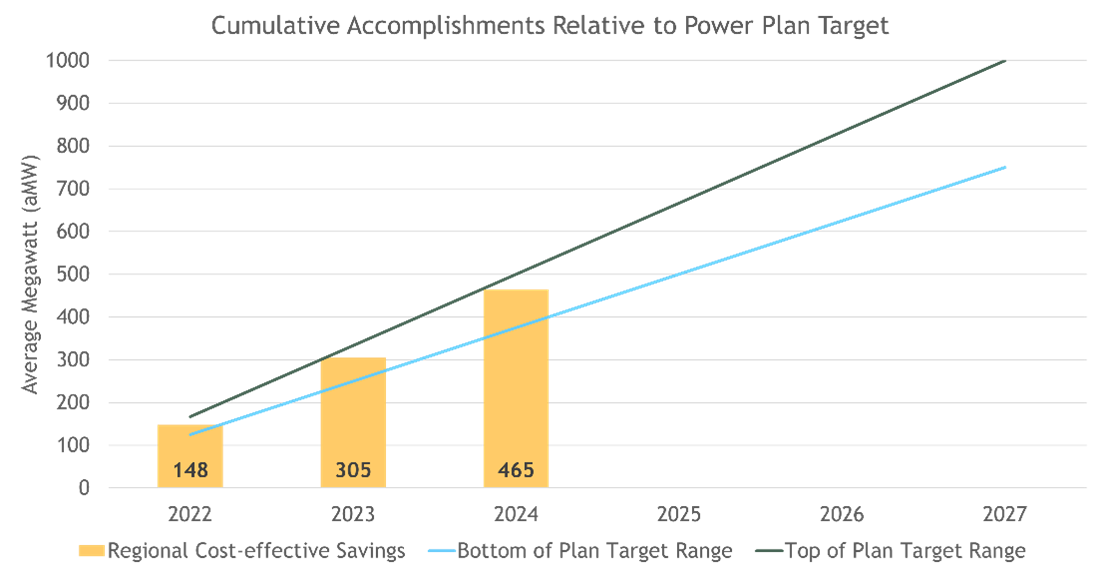
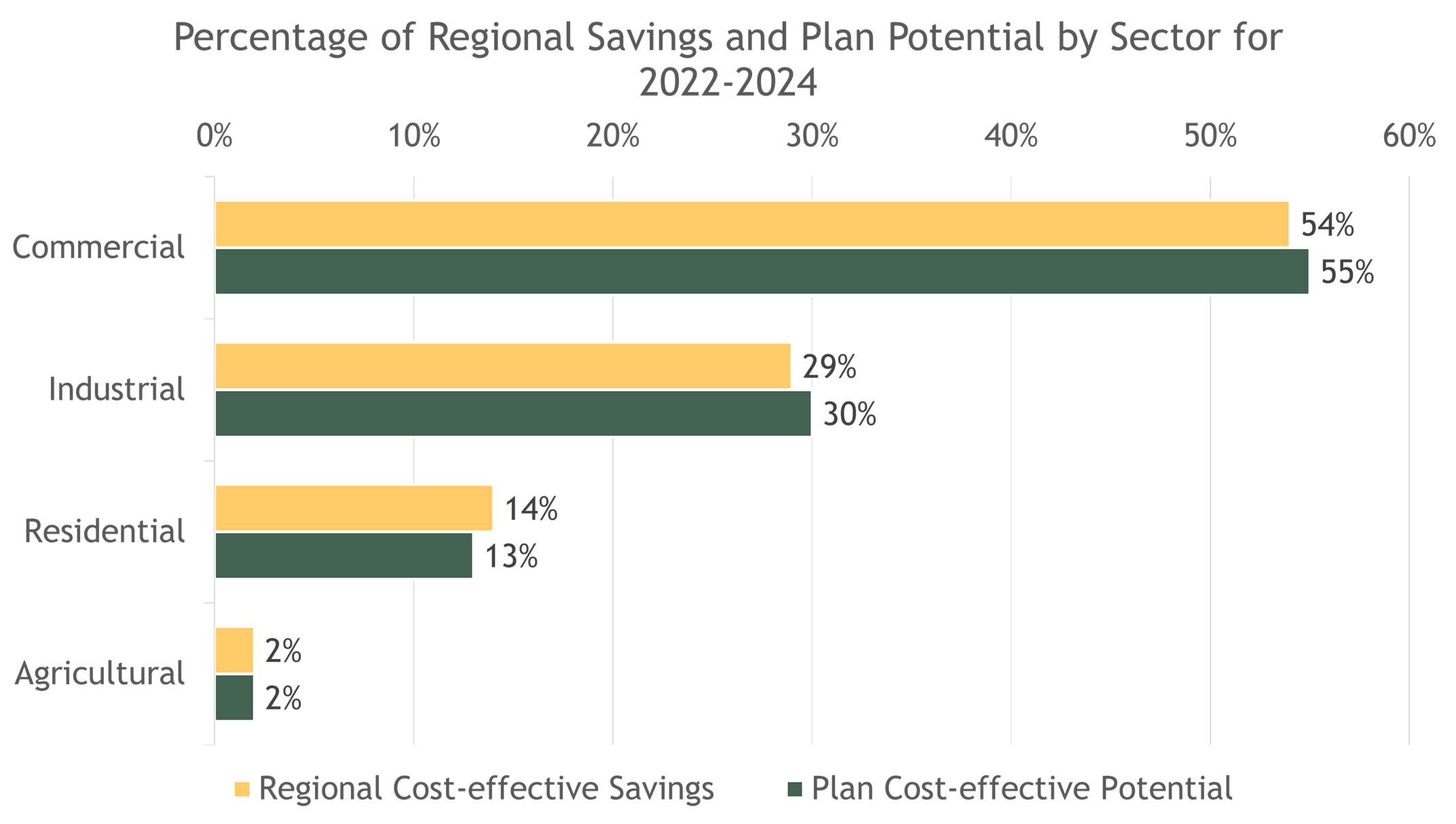
Regional Savings by Sector
More than half of the savings from the first three years of the plan period have come from the commercial sector, followed by industrial and residential sectors programs respectively. The graph shows a comparison of the Plan’s potential by sector for 2022-2024 to the regional savings achieved during the same time period. This shows close alignment in where the Plan anticipated savings to occur and the sectors in which the region is capturing cost-effective savings.
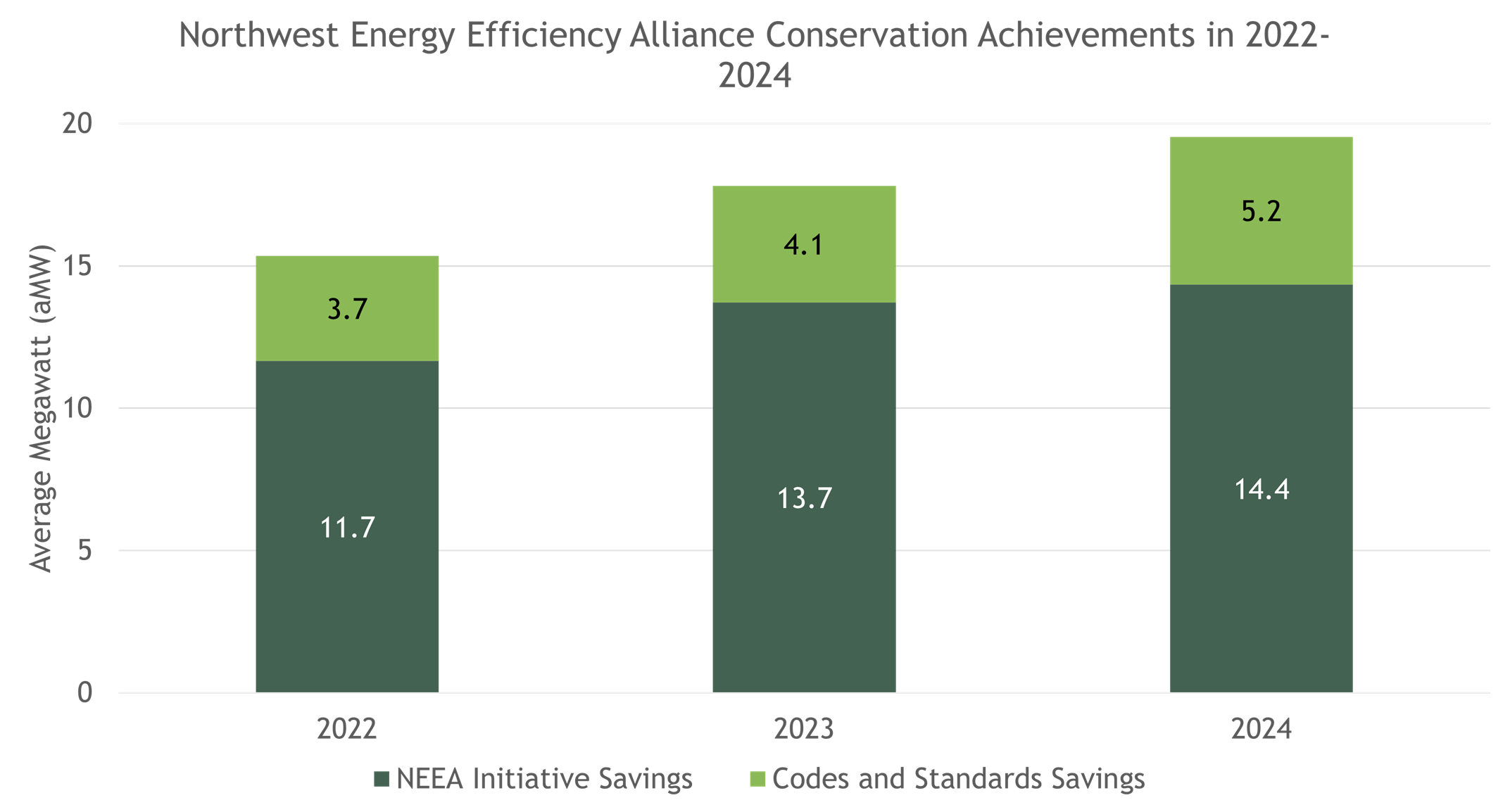
NEEA Savings
The Northwest Energy Efficiency Alliance is continuing to provide value to the region toward achieving conservation, through both its market transformation initiatives and codes and standards work. In 2024, NEEA achieved almost 20 aMW of savings.
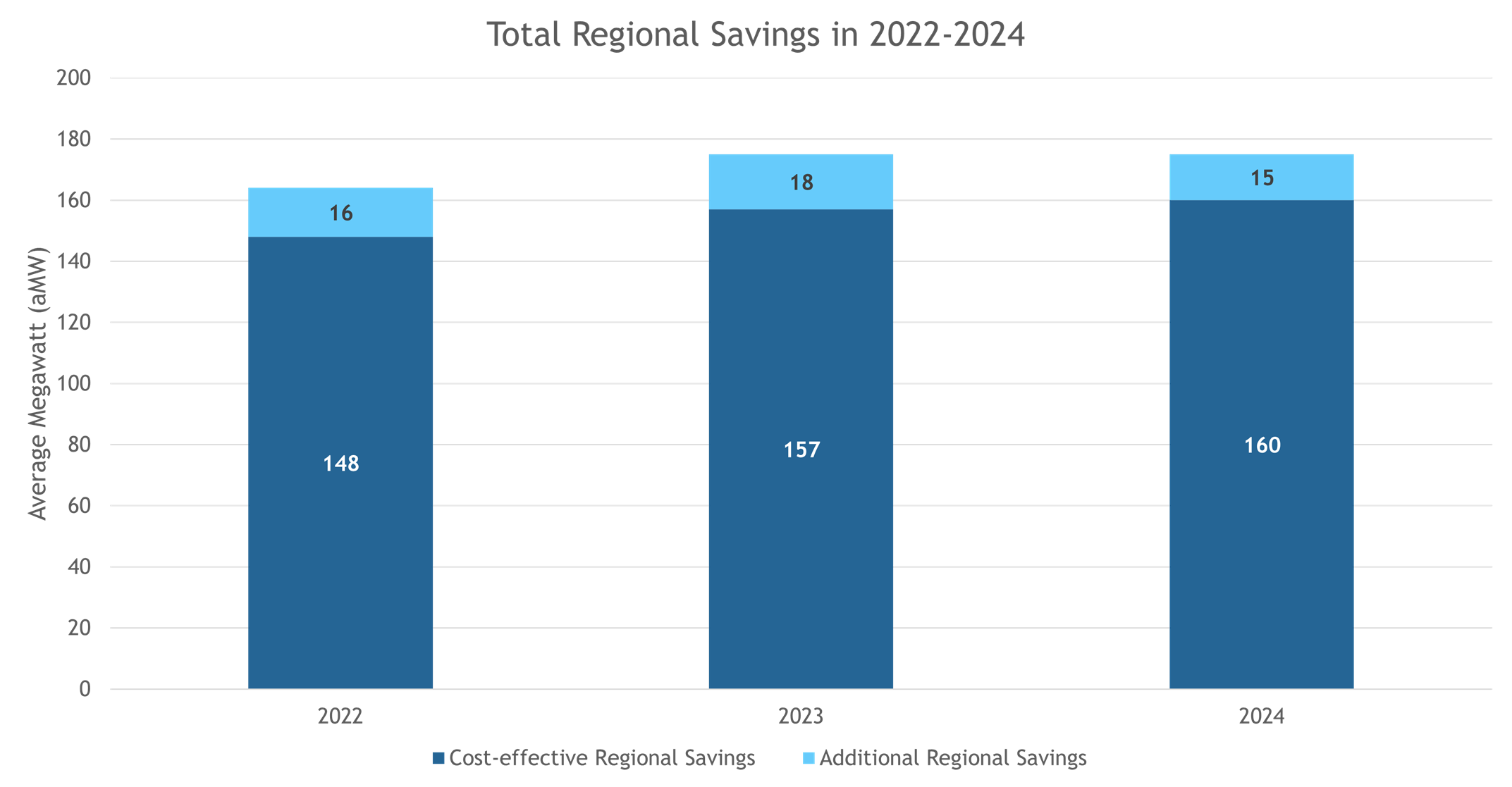
Other Regional Savings Achieved
The Plan recommended that programs focus on cost-effective energy efficiency first and as we have seen there continues to be opportunities for programs in these areas. That said, the Plan also recognized that there were additional goals, customers, and markets that the region may need to pursue non cost-effective measures to continue to support that were detailed in other elements of the Conservation Program. The Plan detailed three additional areas for program to focus once they have gotten all the available cost-effective energy efficiency, including continued investment in weatherization programs, ensure customers in small and rural markets have program opportunities in residential and agricultural programs, and for jurisdictions required to pursue decarbonization that they do so efficiently. The region achieved 15 aMW in additional savings in 2024.
Historical Regional Savings
Over the past 45 years, the Northwest has saved 8,042 aMW by acquiring cost-effective energy efficiency called for in the Council’s power plans. To put that in perspective, the city of Seattle consumes roughly 1,000 aMW of electricity annually. Put another way, 8,000 aMW is approximately three times the average annual output of the Northwest’s largest electricity generating resource, Grand Coulee Dam. Acquiring this efficiency has avoided more than 25.5 million metric tons of carbon dioxide emissions, which is equivalent to the total amount of CO2 sequestered in all the national forest lands in Oregon and Washington.
When measured by average annual output, energy efficiency is the second-largest resource on the Northwest’s electricity grid behind hydropower. That has also resulted in over $5 billion in avoided energy costs in the Northwest and energy efficiency has met more than half of the regions load growth since 1980.
